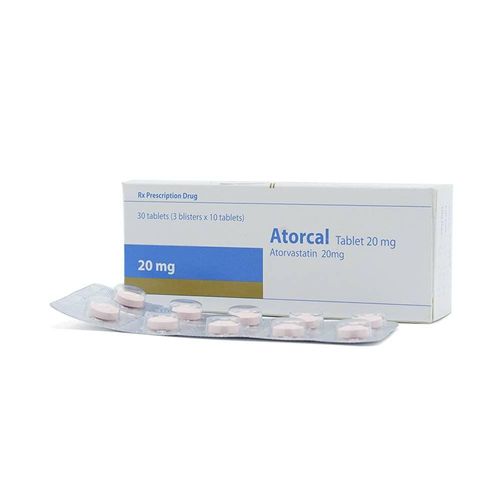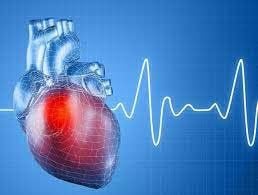This is an automatically translated article.
Article by Master, Doctor Mai Vien Phuong - Gastrointestinal endoscopist - Department of Medical Examination & Internal Medicine - Vinmec Central Park International General Hospital.
Noncardiac chest pain is defined as recurrent chest pain that is indistinguishable from ischemic heart attack after cardiac causes have been excluded. Noncardiac chest pain is a common disorder that results in substantial health care use and significant absenteeism. However, despite its chronic nature, noncardiac chest pain did not affect patient mortality.
1. What is non-cardiac chest pain?
Noncardiac chest pain is recurrent chest pain indistinguishable from ischemic heart attack after cardiac causes have been excluded. Patients with noncardiac chest pain will feel their chest tighten, tighten, or burn. Pain may radiate to the back, neck, arms, and jaw.
All patients with noncardiac chest pain should be evaluated by a cardiologist to rule out cardiac angina. However, the clinical distinction between cardiac and noncardiac angina is difficult, the proportion of patients with noncardiac angina tends to be higher and the pain intensity is greater
For doctors Cardiologist, any 2 of the following clinical features are suggestive of atypical cardiac angina, and only one or none of these features is indicative of noncardiac chest pain:
Feeling chest discomfort, pressure, or heaviness that lasts several minutes Pain caused by exertion, emotion, exposure to cold, or overeating Pain that subsides with rest or nitroglycerine is often a sign of angina .
2. Non-cardiac causes of chest pain
There are many causes of noncardiac chest pain and they are not limited to the esophagus. Therefore, the term noncardiac chest pain is more inclusive and includes musculoskeletal, pulmonary, cardiovascular, infectious, drug-related, psychological, and other gastrointestinal disorders.
The Rome Criteria do not specifically address noncardiac chest pain but rather a subset of patients with noncardiac chest pain termed functional chest pain of putative esophageal origin. These are patients with recurrent later episodes of organ quality chest pain for which no clear explanation is available by available laboratory tests.
3. Psychological problems and non-cardiac chest pain
Comorbidities, such as panic disorder, anxiety disorder, and depression are common in patients with noncardiac chest pain.
Psychological comorbidities have been shown to be common in noncardiac chest pain and affect up to 75% of patients. It has not yet been determined whether high levels of psychopathy may be related to referral bias to graduate referral centers or if it is the result of long-term painful experiences. Regardless, studies have reported a high rate (>50%) of panic disorder, anxiety, and major depression in patients with noncardiac chest pain. Other psychological abnormalities that have also been reported include neurosis, hypocrisy, obsessive-compulsive disorder, obsessive-compulsive disorder, and nausea.

4. What are the common psychological disturbances in noncardiac chest pain?
In a small study of 36 subjects with noncardiac chest pain, the authors found that 58% had some form of psychological abnormality. Among them, anxiety disorders, depression, and panic attacks are the most common.
In a large population-based study in Australia, the authors surveyed a random sample of 1,000 residents in the Sydney area. Among those with noncardiac chest pain, the prevalence of anxiety was 23% and depression was 7%. In a telephone survey from Hong Kong that included 2,209 subjects, the authors demonstrated that depression and anxiety were significantly more common in patients with noncardiac chest pain than in those without pain. noncardiac chest.
Chest pain has been shown to be strongly correlated with psychological abnormalities Among all esophageal symptoms, chest pain has been shown to be strongly correlated with cardiac measurement abnormalities physical. In some patients, chest pain is part of a range of symptoms that characterize a panic attack. Panic attacks are a common cause of emergency room visits due to chest pain. In a large study that included 441 consecutive emergency patients presenting with chest pain who presented to the emergency department of a cardiovascular center, 25% were diagnosed with a panic attack.
Hyperventilation can also cause chest pain While the reason for the observed association between noncardiac chest pain and panic disorder has not been fully elucidated, hyperventilation has been shown to be causes chest pain in 15% of patients with noncardiac chest pain. In addition, it has been shown that hyperventilation can induce reversible esophageal pressure abnormalities such as esophageal spasm (4%) and nonspecific esophageal motility disorders (22%). ). Furthermore, studies have demonstrated that hyperventilation can lead to a panic attack.
Anxiety and depression affect chest pain Anxiety and depression influence pain reports and thus contribute to the pathophysiology of noncardiac chest pain. Lantinga et al. found that patients with noncardiac chest pain had higher levels of neurological disturbances and mental illness before and after cardiac catheterization (coronary stenting) than patients with coronary artery disease. This finding seems to have prognostic significance as these patients had less pain improvement, more frequent pain episodes, better socially unadjusted, and more anxious at 1-year follow-up than those who did not. had a relatively low initial level of psychosocial disturbance.
In a large epidemiological study from the UK, a significant relationship between noncardiac chest pain and psychiatric disorders was demonstrated in young adults. Two independent variables were associated with chest pain, namely parental illness and childhood fatigue.

5. Frequency of panic disorder, anxiety disorder and depression among patients with noncardiac chest pain and coronary artery disease
Studies have been inconsistent when comparing the frequency of panic disorder, anxiety, and depression between patients with noncardiac chest pain and those with coronary artery disease. Some studies reported an increase in panic disorder, anxiety, and depression in patients with noncardiac chest pain, while others did not find a significant difference in the prevalence of psychosis between 2 groups.
In 1 study with 199 participants, panic disorder was more common in noncardiac chest pain than in those with coronary artery disease (41% vs 22%). However, other mental disorders accounted for a high rate (72%) but there was no difference between the 2 groups. In contrast, Cormier et al demonstrated that 98 patients with noncardiac chest pain scored higher on measures of anxiety and negative life events and had a higher prevalence of DSM III panic disorder. significantly higher (47% vs 6%), major depression (39% vs 8%) and 2 or more simple phobias (43% vs 12%) compared with coronary artery disease patients.
In a recent multivariate analysis, the authors were able to develop a predictive model to distinguish between noncardiac chest pain and coronary artery disease, including dyschromia (the patient's condition). unable to express feelings verbally), quality of life and coping based on religion and medical help seeking (sensitivity 85.4% and specificity 80.0%).
6. Quality of life in patients with noncardiac chest pain with psychological disturbance
Patients with noncardiac chest pain with psychological disturbances reported a decreased quality of life, more frequent chest pain, and less satisfaction with treatment than patients with noncardiac chest pain without a psychiatric illness. One study found that patients with noncardiac chest pain had more than one psychological disorder that was more difficult to treat than patients with only one psychological disorder.
Cheng et al demonstrated that patients with noncardiac chest pain, when compared with rheumatic patients and healthy controls, tended to have more follow-up, using a more problem-focused coping approach. , showing less strategic fit coping patterns and receiving less emotional support. of stress. In addition, monitoring perceptual styles and problem-focused coping was associated with higher levels of anxiety and depression.
In summary, understanding of the epidemiology and natural course of noncardiac chest pain is still relatively limited. Overall, the disease appears to be very common, without any sexual orientation, and has a good prognosis. More has been learned over the years that GERD, esophageal dysfunction, esophageal hypersensitivity, and psychological comorbidities are important underlying mechanisms of noncardiac chest pain. In patients with functional chest pain, the exact pathogenesis and initial event or events leading to lifelong chronic chest pain are still poorly understood.
Please dial HOTLINE for more information or register for an appointment HERE. Download MyVinmec app to make appointments faster and to manage your bookings easily.
References:Ronnie Fass and Sami R Achem, Noncardiac Chest Pain: Epidemiology, Natural Course and Pathogenesis, J Neurogastroenterol Motil. 2011 Apr; 17(2): 110–123. Jerlock M, Welin C, Rosengren A, Gaston-Johannson F. Pain characteristics in patients with unexplained chest pain and patients with ischemic heart disease. Eur J Cardiovasc Nurs. 2007;6:130–136. [PubMed] [Google Scholar]2. Fass R, Navarro-Rodriguez T. Noncardiac chest pain. J Clin Gastroenterol. 2008;42:636–646. [PubMed] [Google Scholar]3. Fenster PE. Evaluation of chest pain: a cardiology perspective for gastroenterologists. Gastroenterol Clin North Am. 2004;33:35–40. [PubMed] [Google Scholar]














